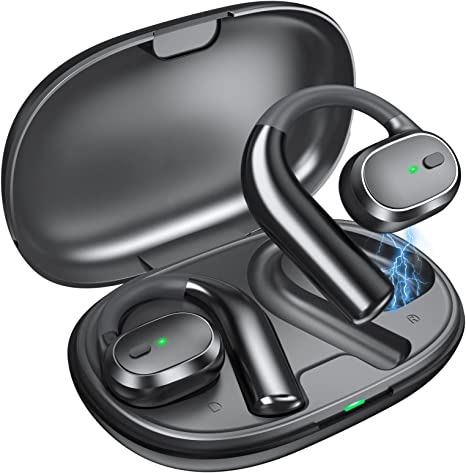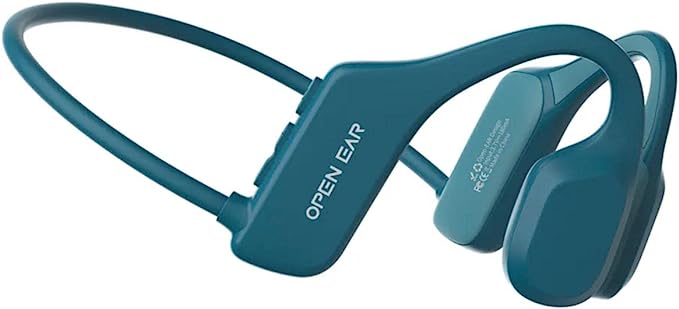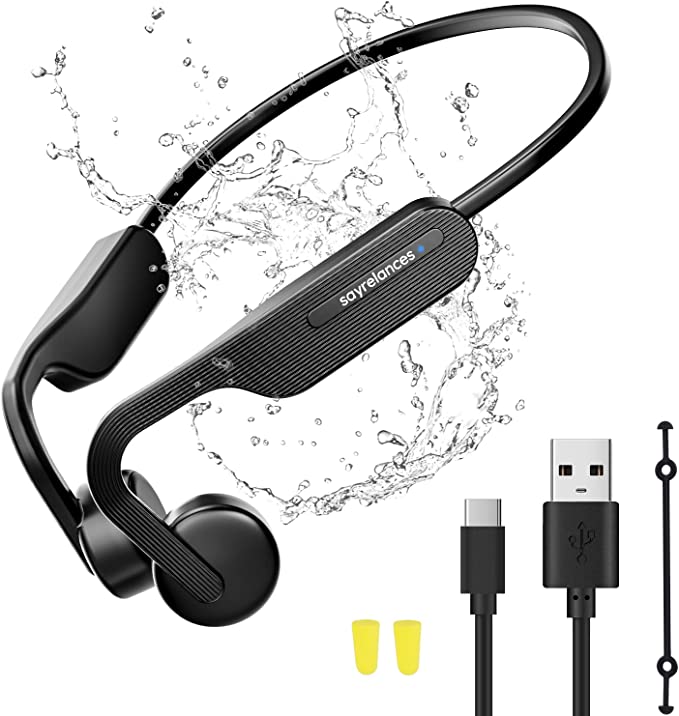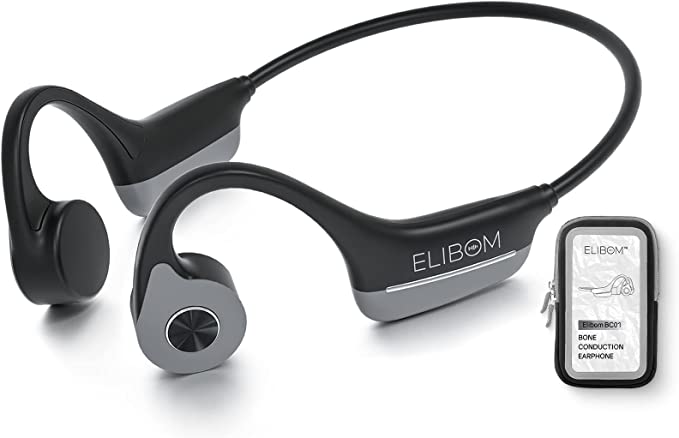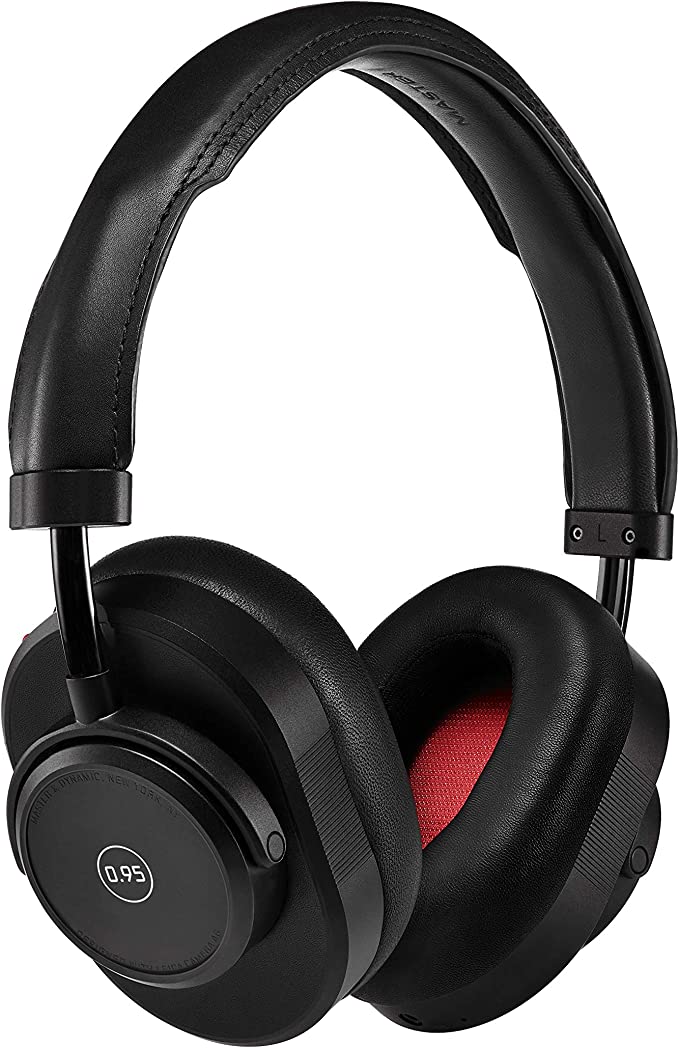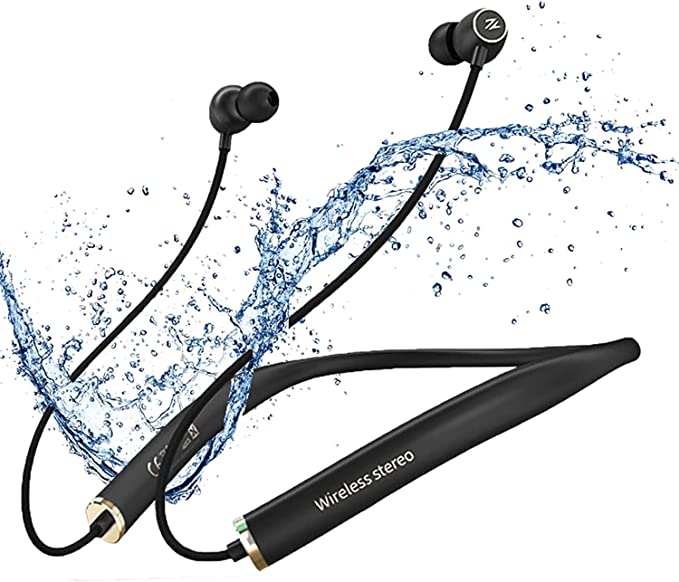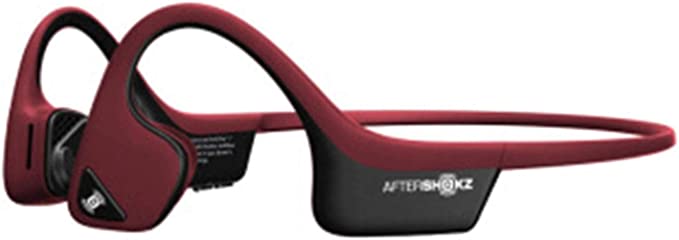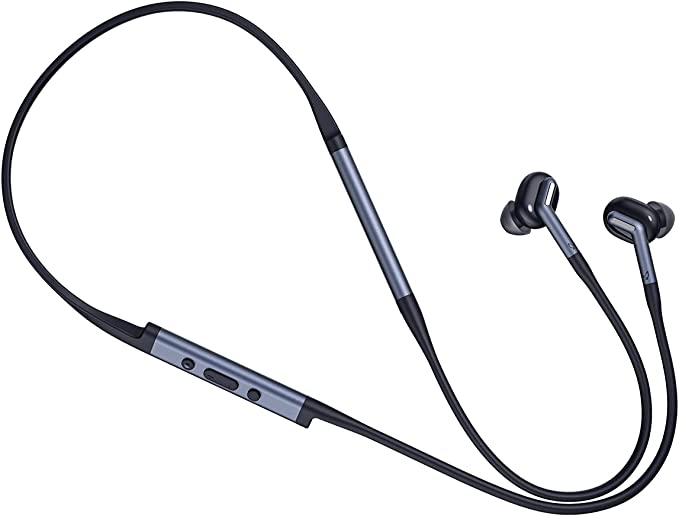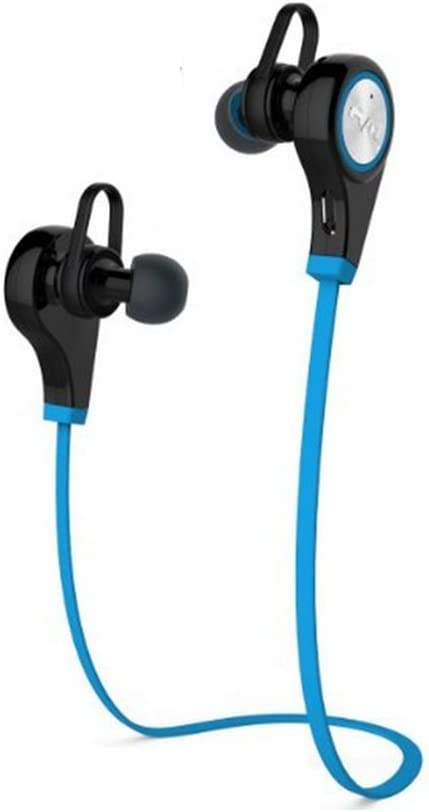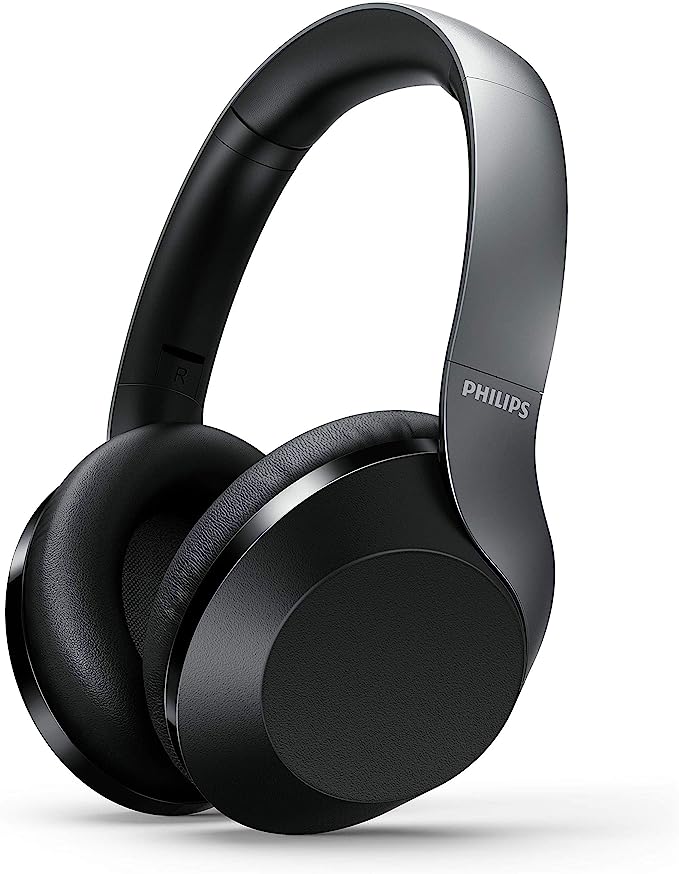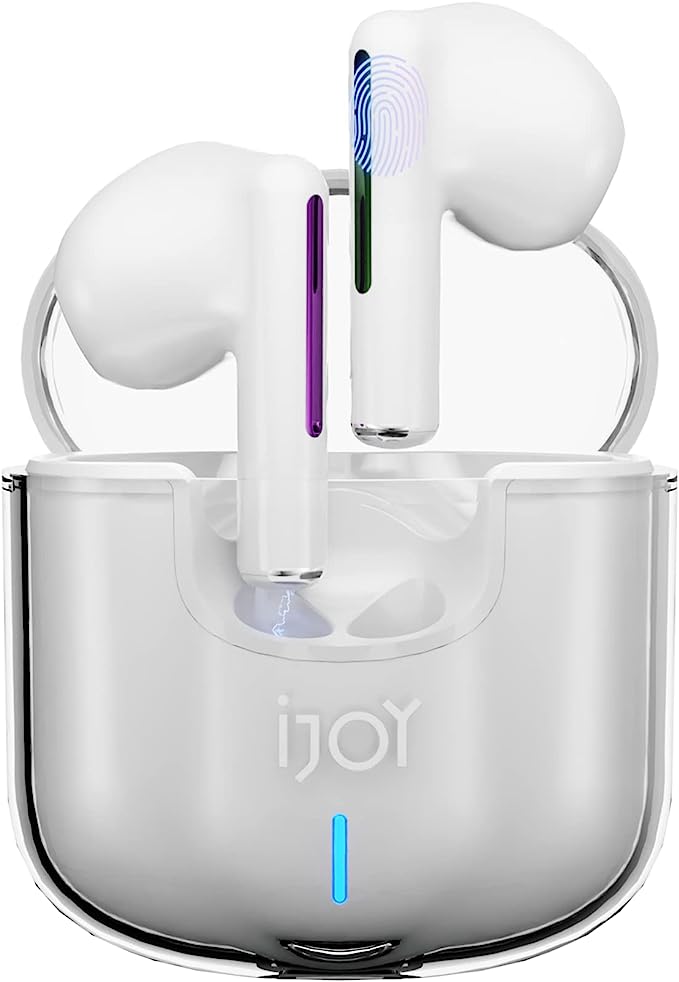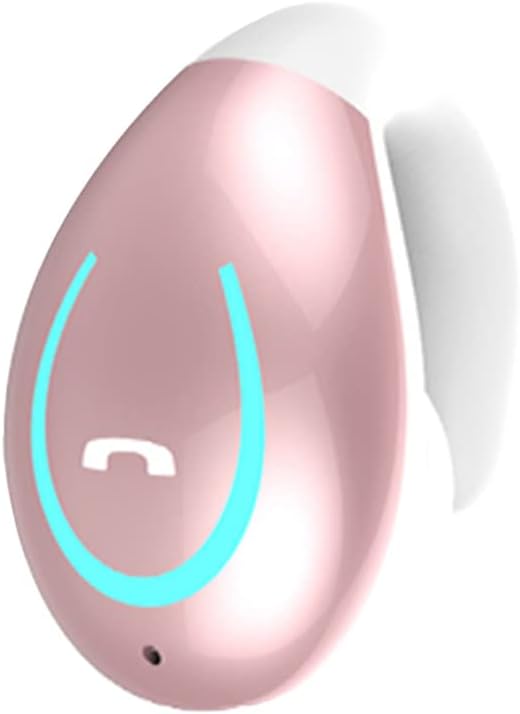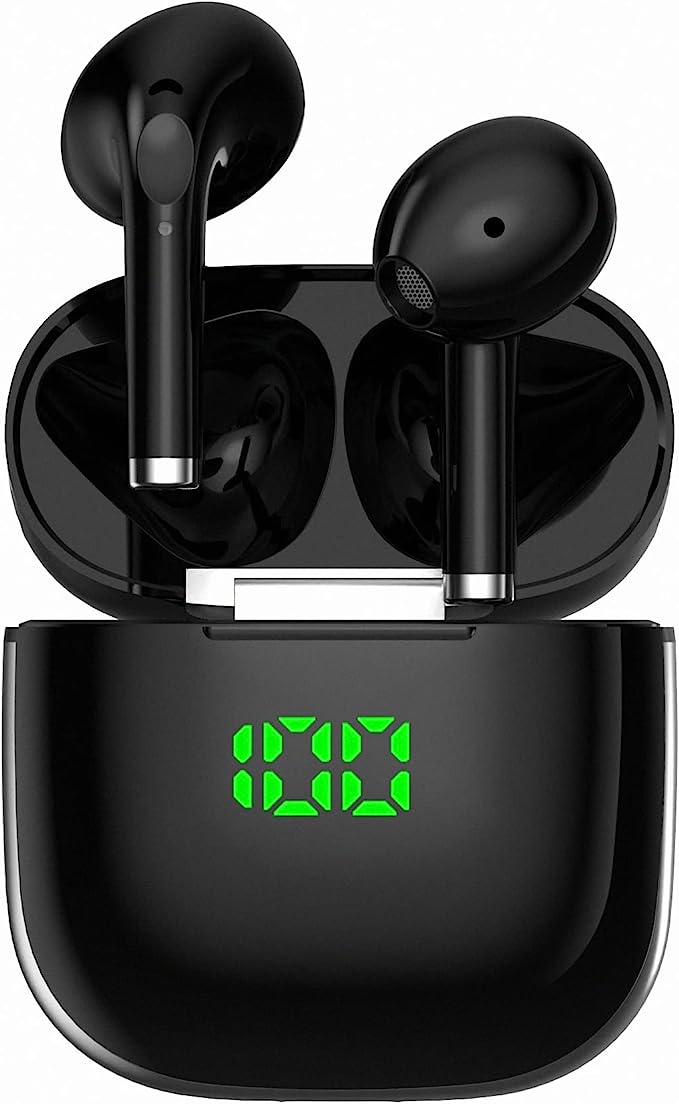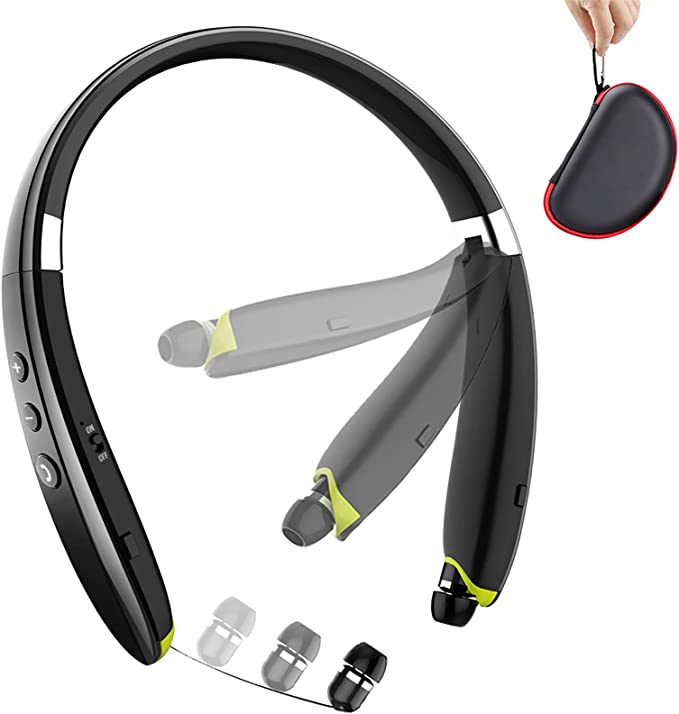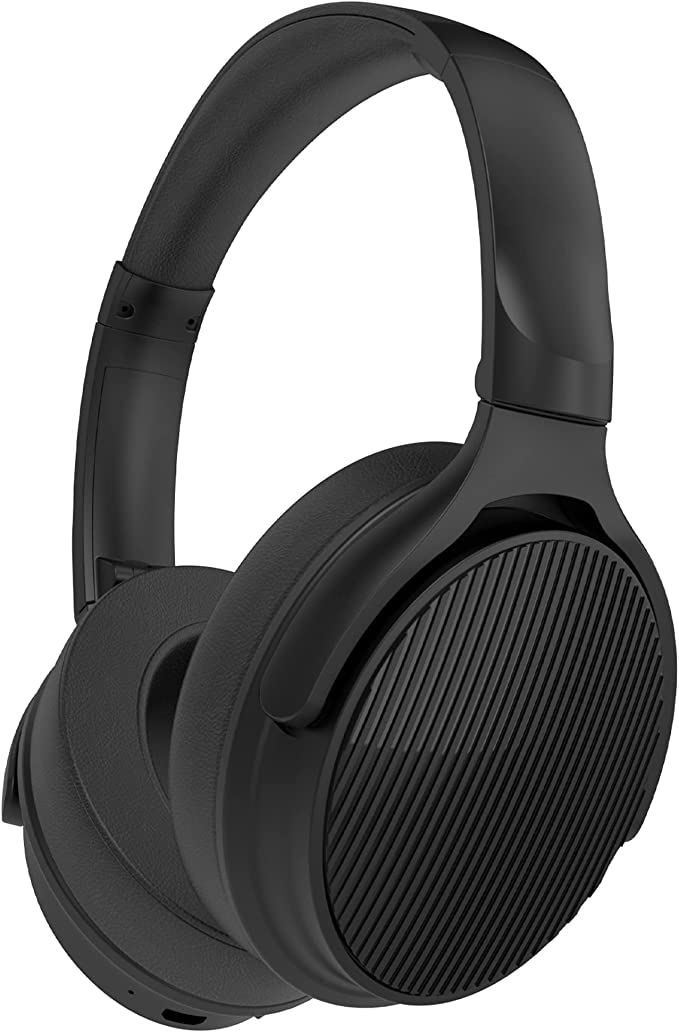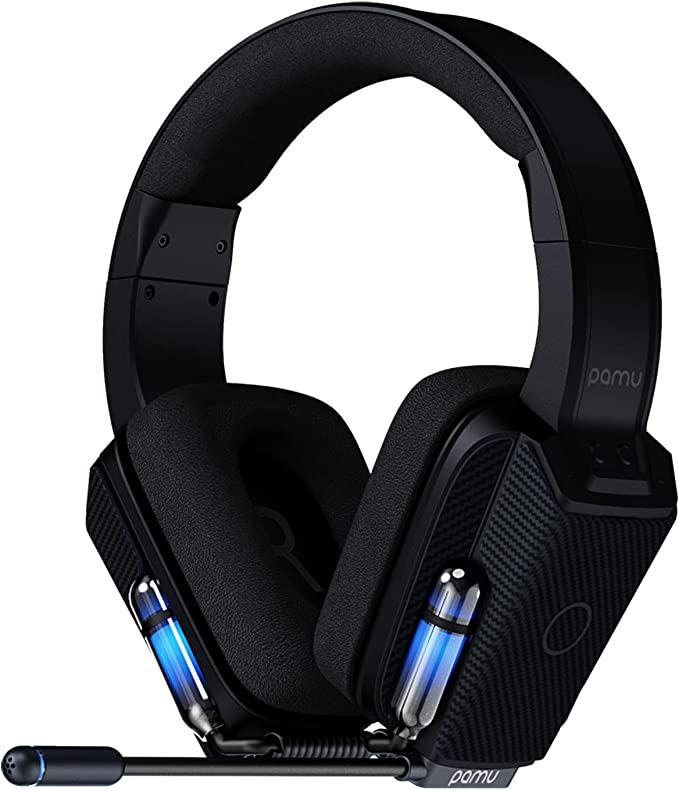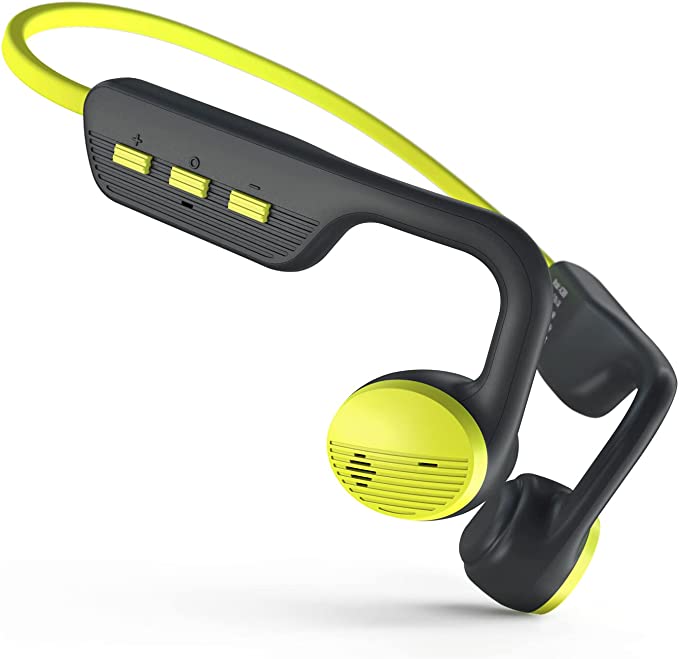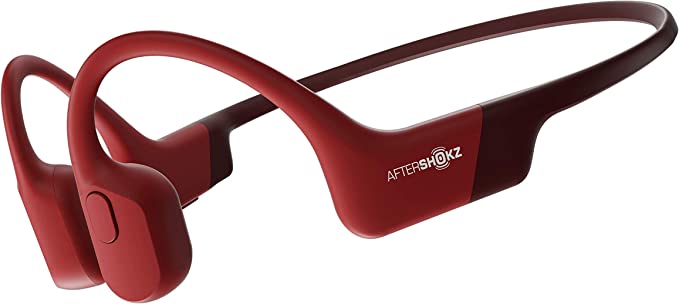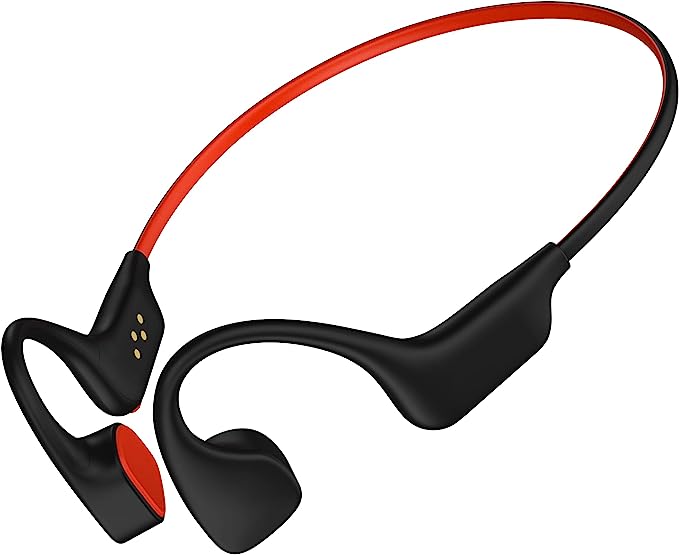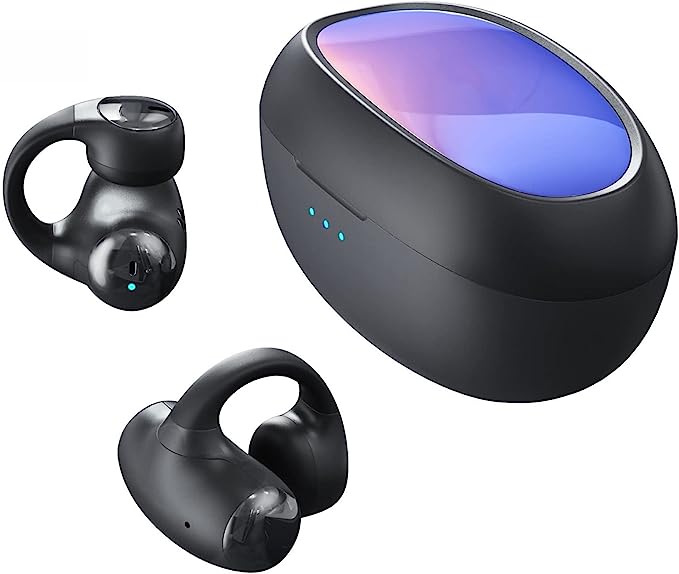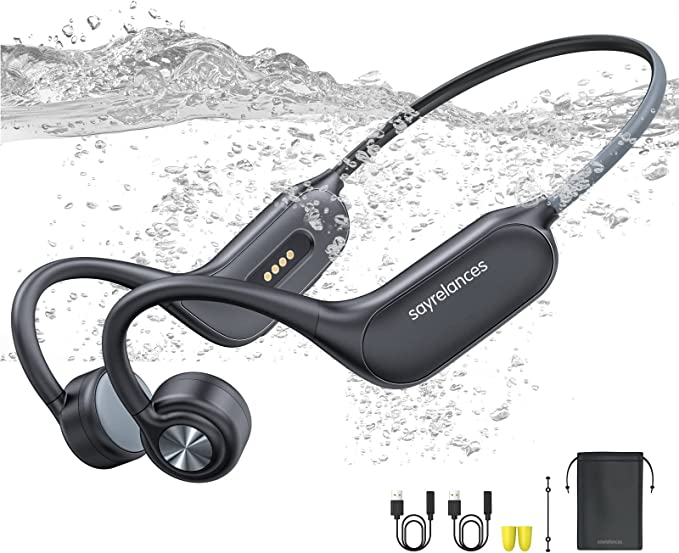Rumatas X6 Max Bone Conduction Wireless Headphones: A Swimmer's Dream Bone Conduction Headphones
Update on June 24, 2025, 3:20 p.m.
Imagine this: you’re gliding through the water, lap after lap, the rhythmic splash of your stroke accompanied by your favorite motivational playlist. Or perhaps you’re navigating a bustling city street on your bike, an engaging podcast playing, yet you’re perfectly aware of the approaching car or a pedestrian’s call. In both scenarios, your ears are completely open, unblocked. Magic? Not at all. It’s a fascinating branch of audio science called bone conduction, and it’s changing the way we listen, especially when we’re on the move. The Rumatas X6 Max Bone Conduction Wireless Headphones offer a brilliant window into this technology, showcasing how understanding sound’s journey can lead to remarkable innovations.

To truly appreciate bone conduction, let’s first consider how we typically hear. Most sounds reach us via air conduction. Sound waves—tiny vibrations in the air—travel down our ear canal, causing the eardrum to vibrate. These vibrations are then amplified by the delicate bones of the middle ear (the ossicles) and transmitted to the cochlea, a spiral-shaped marvel in our inner ear. Here, specialized hair cells convert these mechanical vibrations into electrical signals that our auditory nerve carries to the brain, which then interprets them as the sounds of our world. It’s an intricate and elegant system.
But what if we could bypass parts of this pathway? This is precisely what bone conduction achieves. Instead of relying on air to carry sound waves to the eardrum, bone conduction technology uses transducers that rest gently on the bones of your skull, typically the cheekbones just in front of the ears. These transducers convert audio signals into subtle mechanical vibrations. These vibrations then travel directly through the solid structure of your bones to the very same inner ear, the cochlea. Your cochlea, it turns out, isn’t particularly fussy about how it receives these vibrations—whether they arrive via the eardrum and middle ear or take a shortcut through your skeletal structure, it diligently processes them into the neural impulses our brain understands as sound.
This isn’t a brand-new concept. History whispers of Ludwig van Beethoven, the legendary composer who, as his hearing deteriorated, reportedly discovered he could still perceive the notes of his piano by clenching a wooden rod between his teeth and resting the other end on the instrument. The vibrations from the piano traveled through the rod and his jawbone, directly stimulating his inner ears. While a rudimentary application, it beautifully illustrates the core principle: sound can indeed take a detour through bone.

The Rumatas X6 Max masterfully employs this principle, and the most immediate, liberating benefit is the open-ear design. Because nothing covers or enters your ear canal, you maintain full situational awareness. For a runner or cyclist, this means hearing approaching traffic, a bicycle bell, or even the subtle sounds of nature around them—a critical safety aspect. For someone simply walking through a park, it means enjoying their audio while still being present in their surroundings, able to hear a friendly greeting or a child’s laughter. Beyond safety, there’s profound comfort. No more ear canal pressure, no more sweaty, dislodged earbuds during an intense workout. This freedom is further enhanced by thoughtful engineering; these headphones weigh a mere 30 grams, a testament to how advanced materials and design minimize any sense of burden. The product details even mention titanium, a material often favored in high-performance headphones for its excellent strength-to-weight ratio and ability to transmit vibrations effectively, contributing to both durability and clear sound.
Now, let’s dive into an environment where traditional audio solutions often flounder: water. For swimmers, listening to music or guided workouts has long been a challenge. Water blocks Bluetooth signals effectively, and earbuds, even “water-resistant” ones, can be problematic. This is where the Rumatas X6 Max truly shines, thanks to a combination of clever technologies.

First, its IPX8 waterproof rating. In the world of Ingress Protection ratings (defined by the IEC 60529 standard), the ‘8’ signifies the highest level of protection against continuous water immersion under specified conditions. For the X6 Max, this means it’s not just resistant to splashes or sweat; it can be fully submerged in water up to 2 meters deep for up to 2 hours. This robust sealing is often achieved through precision engineering of the casing and the use of materials like silicone for gaskets. Aiding this aquatic capability is the magnetic charging system. By eschewing a traditional USB port, which can be a point of vulnerability for water ingress, the magnetic connection ensures a more reliably sealed unit.
But even with perfect waterproofing, how does the sound get to you underwater if Bluetooth is unreliable? The answer lies in the built-in MP3 mode. The X6 Max features 32GB of internal storage, capable of holding approximately 8000 songs or a vast library of audiobooks and podcasts. This allows you to load your audio directly onto the headphones, making you completely independent of your phone and immune to Bluetooth’s aquatic struggles. You become your own self-contained audio hub, gliding through the water with your personal soundtrack. For swimmers who find rhythm and motivation in music, this is a game-changer. The inclusion of earplugs in the package is also a thoughtful touch; for some users, especially in noisy pools, using earplugs can block out ambient water noise from the ear canals, further enhancing the clarity of the bone-conducted sound by reducing competing auditory input.

Of course, life isn’t lived entirely underwater. Back on dry land, the versatility of Bluetooth 5.3 comes into play. This modern Bluetooth standard ensures a fast, stable, and energy-efficient wireless connection to your smartphone or other devices for streaming music, podcasts, or taking calls using the integrated microphone. And to power these diverse experiences, the headphones boast an impressive battery life, offering up to 10 hours of continuous playtime on a single charge that takes just 1 to 2 hours. This efficiency is crucial for users who want their gear ready when they are, without constant tethering to a power source.

The Rumatas X6 Max, therefore, isn’t just a pair of headphones; it’s an elegant application of acoustic science and resilient engineering. It addresses the common frustrations of conventional headphones in active scenarios by fundamentally changing how sound reaches you. The open-ear design fostered by bone conduction provides an unparalleled blend of audio enjoyment and environmental awareness, enhancing both safety and the sensory richness of your activities. Whether you’re pushing your limits in the pool, pounding the pavement, cycling through cityscapes, or simply seeking a more comfortable and aware listening experience in your daily life, this technology opens up new possibilities.
It’s a powerful reminder that innovation often comes from revisiting fundamental principles and applying them in novel ways. The journey of sound is a fascinating one, and technologies like bone conduction, as exemplified by the Rumatas X6 Max, are allowing us to explore its pathways in ways that are more integrated, more liberating, and more attuned to the dynamic tapestry of our lives. It’s not just about hearing music; it’s about experiencing your world, and your audio, with a newfound clarity and freedom.
